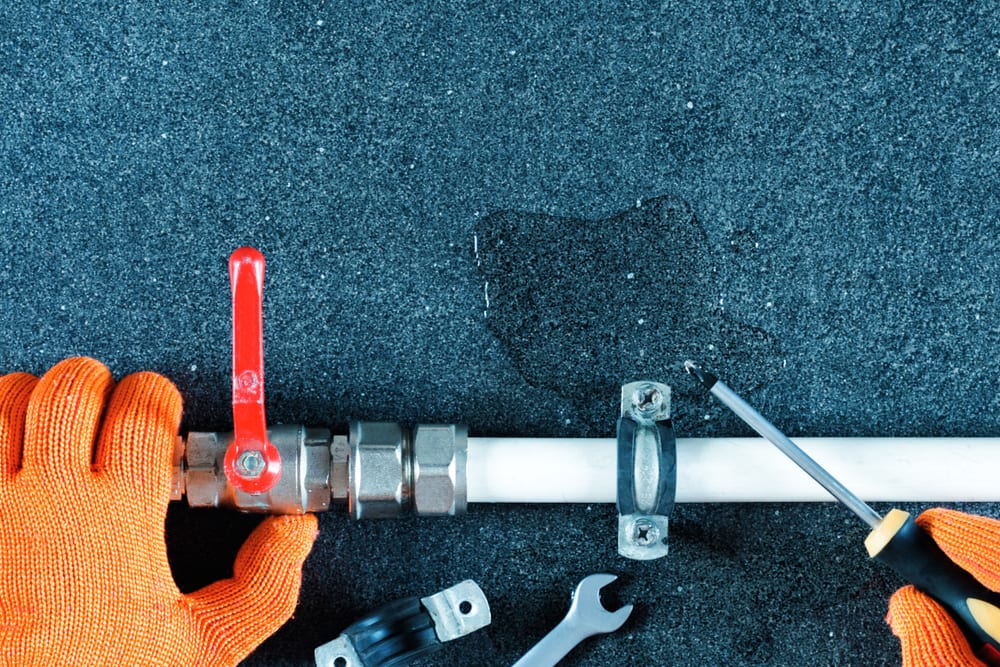Overview To Water Leakage Detection In Your Home
Overview To Water Leakage Detection In Your Home
Blog Article
Everybody maintains their own assumption when it comes to Detecting hidden plumbing leaks.

Early detection of dripping water lines can mitigate a prospective calamity. Aside from conserving you money, it will certainly lessen the stress and frustration. The minute you find a leak, calling your plumber for repair work is the most effective option. Nonetheless, some tiny water leaks might not show up. If you can not identify it with your naked eyes, right here are some hacks that help.
1. Take A Look At the Water Meter
Every house has a water meter. Checking it is a guaranteed manner in which aids you discover leakages. For beginners, turn off all the water resources. Ensure no person will certainly flush, utilize the tap, shower, run the washing maker or dishwasher. From there, most likely to the meter and also watch if it will change. Because nobody is utilizing it, there should be no activities. That indicates a fast-moving leakage if it moves. If you spot no modifications, wait a hr or 2 as well as inspect back once again. This means you may have a sluggish leak that might also be underground.
2. Examine Water Consumption
Evaluate your water expenses and also track your water usage. As the one paying it, you need to observe if there are any type of inconsistencies. If you identify sudden changes, in spite of your usage coinciding, it suggests that you have leaks in your plumbing system. Bear in mind, your water bill should fall under the exact same variety every month. A sudden spike in your costs shows a fast-moving leakage.
A steady boost every month, even with the same habits, shows you have a sluggish leakage that's additionally gradually escalating. Call a plumber to thoroughly inspect your building, particularly if you feel a cozy area on your flooring with piping below.
3. Do a Food Coloring Examination
When it comes to water usage, 30% comes from bathrooms. If the color in some way infiltrates your bowl throughout that time without flushing, there's a leakage in between the container and also bowl.
4. Asses Exterior Lines
Don't fail to remember to check your outdoor water lines too. Test spigots by attaching a garden hose. Needs to water permeate out of the link, you have a loosened rubber gasket. Replace this and guarantee all links are tight. It will help get it professionally took a look at as well as maintained each year if you've got a lawn sprinkler system. One small leakage can squander tons of water and spike your water costs.
5. Check and Evaluate the Situation
Home owners must make it a habit to examine under the sink counters and also also inside cupboards for any bad odor or mold and mildew growth. These 2 red flags indicate a leak so punctual attention is needed. Doing regular assessments, also bi-annually, can save you from a major issue.
Examine for stainings as well as deteriorating as most pipelines and also devices have a life expectations. If you believe dripping water lines in your plumbing system, don't wait for it to escalate.
Early discovery of leaking water lines can reduce a possible catastrophe. Some little water leaks might not be visible. Examining it is a surefire means that helps you discover leakages. One tiny leakage can lose tons of water as well as spike your water costs.
If you presume leaking water lines in your plumbing system, do not wait for it to escalate.
WARNING SIGNS OF WATER LEAKAGE BEHIND THE WALL
PERSISTENT MUSTY ODORS
As water slowly drips from a leaky pipe inside the wall, flooring and sheetrock stay damp and develop an odor similar to wet cardboard. It generates a musty smell that can help you find hidden leaks.
MOLD IN UNUSUAL AREAS
Mold usually grows in wet areas like kitchens, baths and laundry rooms. If you spot the stuff on walls or baseboards in other rooms of the house, it’s a good indicator of undetected water leaks.
STAINS THAT GROW
When mold thrives around a leaky pipe, it sometimes takes hold on the inside surface of the affected wall. A growing stain on otherwise clean sheetrock is often your sign of a hidden plumbing problem.
PEELING OR BUBBLING WALLPAPER / PAINT
This clue is easy to miss in rooms that don’t get much use. When you see wallpaper separating along seams or paint bubbling or flaking off the wall, blame sheetrock that stays wet because of an undetected leak.
BUCKLED CEILINGS AND STAINED FLOORS
If ceilings or floors in bathrooms, kitchens or laundry areas develop structural problems, don’t rule out constant damp inside the walls. Wet sheetrock can affect adjacent framing, flooring and ceilings.
https://www.servicemasterbyzaba.com/blog/how-to-detect-water-leakage-in-walls/

As a passionate reader about Detecting hidden plumbing leaks, I was thinking sharing that chunk was really helpful. Enjoyed reading our piece? Please share it. Help others locate it. We love reading our article about Hacks to detect leaks.
Report this page